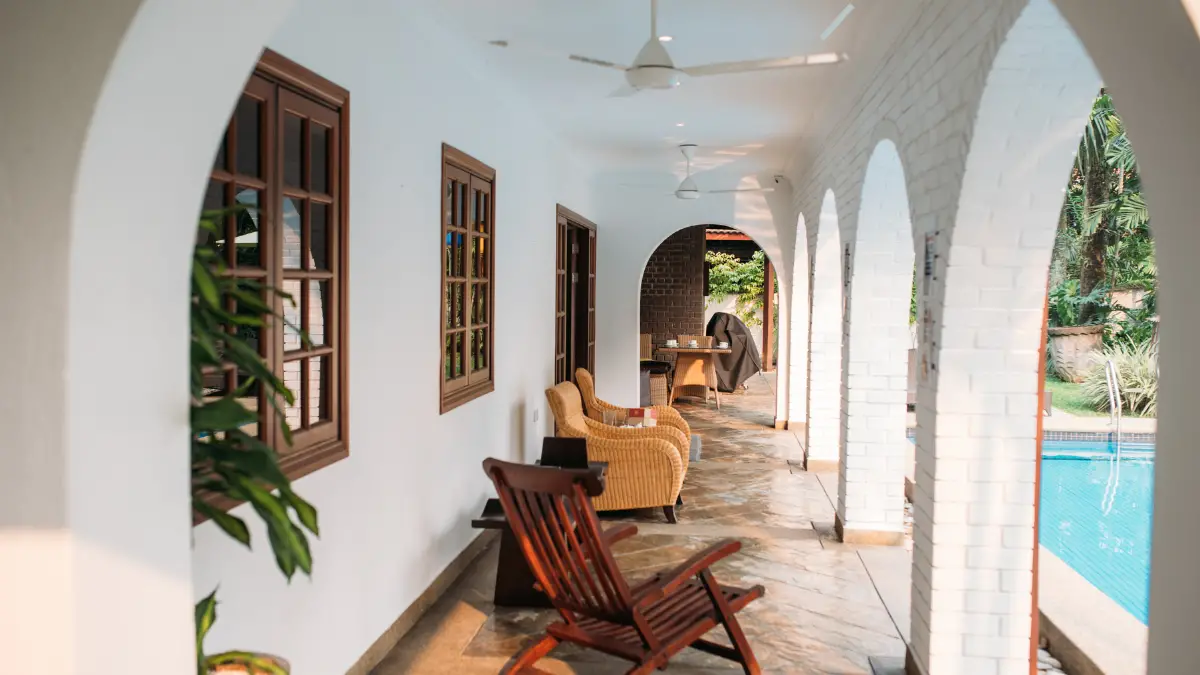The way we design and use our home spaces affects how we live, interact, and connect.
Over time, homes have shifted from places of shared experiences to more individual and digital-focused environments. This evolution is not just about architecture, it reflects deeper shifts in family life, social behavior, and mental well-being.
Architects, sociologists, and urban planners have long studied how living spaces influence human relationships. Edward T. Hall’s Proxemics Theory explores how physical space affects social interactions. Christopher Alexander’s Pattern Language emphasizes how well-designed spaces encourage human connection. Meanwhile, studies in environmental psychology highlight how home layouts impact emotional well-being.
As technology reshapes modern homes, the question arises: Are these changes strengthening family bonds, or are they making us more isolated?
This article explores how our homes have evolved and what that means for relationships, privacy, and social life. It examines five key spaces—the open space, bedroom, kitchen, living room, and bathroom—showing how each has shifted from fostering connection to encouraging more individual experiences.

Open Spaces: From Interaction to Landscape Viewing
Home open spaces like courtyards were once at the heart of family life, where relaxation, outdoor meals, children’s play, and neighborly connections thrived. These spaces fostered social interaction and were often places for shared family activities.
Over time, however, these communal areas have gradually transformed into more solitary spaces. Courtyards now give way to gardens and outdoor seating, where the focus has shifted from interaction to passive enjoyment. What was once a lively space for connection has become a private retreat, designed for individual solace rather than communal interaction
Families now admire their surroundings from a distance rather than actively using them. Some outdoor areas now feature hardscaping, such as interlocks, instead of natural sand, creating a more structured, visually appealing environment that prioritizes aesthetics over engagement
This shift contradicts the principles of biophilia, highlighting the importance of human-nature interaction. Biophilic design isn’t just about greenery, it also supports social well-being by encouraging shared outdoor activities, something that is slowly disappearing in modern often.
The Bedroom: From Sanctuary to Screen
As personal spaces become more connected to the digital world, the boundary between private and public life is fading.
The bedroom has long been a sanctuary—a private space for couples to retreat from the world, connect, and nurture their relationship. It was a place for intimacy, emotional healing, and private moments. Today, however, that sanctuary has been replaced by a screen, where what was once private is now exposed for all to see, turning the bedroom into just another stage for digital distractions.
The bedroom used to be a place of privacy, where couples share intimate moments away from the world. Now, those private moments are often shared online. Couples post affectionate gestures, intimate moments, or personal struggles for their social media followers, eroding the privacy that the bedroom once provided.
Traditionally, the bedroom was where conflicts were resolved—whether through conversation or intimacy. Now, couples often take their issues to online groups, seeking strangers’ advice and asking for anonymity. What once was handled privately in the bedroom is now aired for the world to see, leaving the bedroom as little more than a backdrop for public discourse.
It was also a space for deep conversations and emotional connection. Instead of engaging in meaningful discussions, couples now find themselves glued to their screens, one on Instagram, the other on Facebook. The bedroom, once a place for connection, is now overshadowed by digital distractions that create a disconnect between partners. Psychological studies show that excessive screen time in the bedroom reduces emotional intimacy, replacing deep conversations with digital distractions
This raises concerns about whether digital performance is replacing genuine emotional closeness.
If bedrooms are to remain places of emotional security, families must be intentional about how they integrate As personal spaces become more connected to the digital world, the boundary between private and public life is fading in home aesthetics and online visibility.
The Kitchen: From Bonding and Heritage to Service Space
Anthropologists view cooking as a cultural and emotional experience, not just a functional task. Families passed down recipes, values, and stories, making meal preparation an intergenerational activity.
The kitchen was once a space where mothers and children bonded over meals, learning valuable life skills and family traditions. It was not just for cooking but for nurturing relationships and preserving heritage. Over time, however, this role has shifted. Technology and changing family dynamics have reduced the time spent together in the kitchen, and in many homes, house helps or modern conveniences now take over tasks once shared among family members.
Family heirlooms, old cooking utensils passed down through generations—were once a source of pride and tradition, carrying memories of shared meals and gatherings. Today, they have been replaced by sleek, modern appliances chosen for functionality or aesthetics rather than heritage. The kitchen, once a private space of connection, has also become a public stage. Once a personal and family-centered activity, cooking is now performed for audiences on social media, shifting its role from an intimate experience to a space designed for display and content creation.
While these spaces offer efficiency, they transform cooking into an individual or performative act rather than a shared experience.
From Living Room to Live-in Room
Globally, people now socialize more online than in person, and home layouts increasingly mirror this trend The living room, once the heart of family life, is now simply a space for formal visits or occasional gatherings.
Daily connection, entertainment, and refreshments have moved behind closed doors, making the bedroom the new center of personal and social life.
Where families once engaged in shared experiences like playing games or watching shows together, they now retreat to their rooms for more personalized entertainment. Televisions, once a focal point of the living room, are now commonly found in bedrooms or have been replaced by personal screens, laptops, tablets, and smartphones. Even conveniences like fridges and water dispensers, once exclusive to the living room, are now frequently installed in bedrooms, reducing the need for family members to leave their private spaces.
The audience for socializing in the living room has also shifted. Where family members once gathered to discuss their day or entertain guests, that interaction now happens online. Social media platforms have become the new meeting spaces, replacing in-person conversations with virtual connections, often happening from the solitude of the bedroom.
The shift in interior design also reflects these changes. Where family photos and personal mementos once told stories of shared history, modern, minimalist designs now dominate, prioritizing sleek aesthetics over warmth and connection. Furthermore, furniture and layout choices now offer personal comfort over shared experiences. Instead of large sofas arranged for conversation, modern living rooms often feature single recliners and personal entertainment setups, reinforcing individual rather than family-oriented relaxation.The textures and colors that once made the living room an inviting family space have been replaced by impersonal, functional designs that serve occasional rather than everyday use.
To maintain real-world connections, families must intentionally structure their daily routines around shared experiences rather than isolated digital consumption.
The Bathroom: From Functional Necessity to Private Haven
The bathroom was once a simple space for quick hygiene routines, designed for efficiency rather than comfort. Today, it has become a place for relaxation, self-care, and even solitude. reflecting modern wellness trends.
Bathrooms have grown larger, with features like rainfall showers, mood lighting, and scented candles creating a spa-like atmosphere. The focus has shifted from just getting clean to enjoying a moment of peace. Smart mirrors, heated floors, and digital shower controls add to the comfort, making the space more inviting.
Beyond hygiene, the bathroom has also become a place of escape. Children hide there to avoid chores or punishment, knowing it’s one of the few spaces where privacy is respected. Couples use it as a retreat—whether to take a break from conflict, avoid conversations, or engage in personal activities unnoticed.
Unlike the kitchen in the past, which was never a place to show home, modern bathrooms have become a backdrop for social media. With their sleek designs and luxury finishes, they are now popular spots for selfies and aesthetic photos. Hotel bathrooms, in particular, serve as settings for people to showcase a glamorous lifestyle online.
Once purely functional, the bathroom is now a private sanctuary, an escape, and even a space for digital display.
Conclusion
Research in sociology and architecture suggests that contemporary home designs offer efficiency, but they can also unintentionally weaken the bonds that make a house feel like home.
As home spaces continue to change, it is important to find a balance between modern advancements and the human need for connection. They should not replace the warmth, interaction, and privacy that make a house a home.
Understanding the sociology of homes helps us make better choices in how we design, arrange, and live in our spaces.
Architects can design spaces that encourage both togetherness and personal retreats.
Families can be more intentional about using their spaces, ensuring that digital life does not replace real-life bonds.
While the world moves forward, our homes should remain places of comfort, connection, and meaning—not just spaces for convenience or display.







